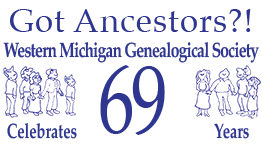Schedule
Saturday 13 October 2018
The seminar will consist of 4 sessions during the day.
| 8:30 – 9:00 | Registration |
| Session 1 9:00 – 10:15 |
The Power of DNA: Genetic Genealogy Basics Understanding the basics of the four types of DNA and three types of genetic genealogy tests is essential to successfully applying genetic genealogy to furthering your research. Explore the power of DNA to discover more about genealogy and extend family tree branches. This presentation helps to lay the foundation for genealogists interested in adding genetic genealogy to their skill set. |
| 10:15 – 11:00 | Break Time and Sales Table |
| Session 2 11:00 – 12:30 |
I Have My Results, Now What? Receiving your DNA results can be overwhelming and leave you wondering what to do next. We will discuss how to navigate the sites, interpret the results from the major companies, understand key genetic genealogy terms and the steps to determining the relationships with your DNA cousins using Autosomal DNA |
| 12:30 – 1:45 | Lunch |
| Session 3 1:45– 3:00 |
Breaking Through Brick Walls with DNA Genetic genealogy has tremendous potential for resolving age-old genealogical questions and extending our pedigrees. Learn how to use your DNA results to enhance your documentary research. We will explore the most successful techniques for identifying your lost ancestors. |
| 3:00 – 3:30 | Break Time and Sales Table |
| Session 4 3:30– 4:45 |
Identifying the Man Known as Paul Fronczak Through DNA Detective Work CeCe will detail the behind-the-scenes research that led to the resolution of the 50-year-old mystery featured on 20/20 and in the book “The Foundling.” Biogeographical ancestry analysis, Y-chromosome STR testing, mitochondrial DNA testing and X-chromosome DNA analysis were essential components of this research, revealing to which specific population groups his ancestral lines belonged and providing guidance in the identification of candidate biological parents. Comprehensive family trees were built for the descendants of the sets of common ancestors identified from the autosomal DNA matching databases. Interviewing and targeted DNA testing of individuals in these candidate family trees enhanced and confirmed the research. Combining information gained from these interviews with the knowledge of the ancestral makeup of the families in question led to the true identity and positive identification of “Paul Fronczak.” |

